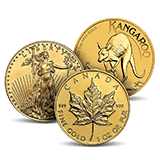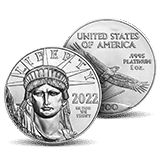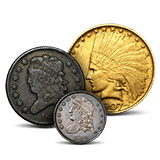
Some of the most valuable discoveries are modest in appearance like the Lincoln Highway hoard, which was found quietly tucked away in an abandoned rural farmhouse. This treasure trove of thousands of Morgan silver dollars stunned the numismatic world and offered a portal into American economic history.
The Discovery of the Lincoln Highway Hoard
The hoard came to light in 2009 during the clearing of a rural farmhouse, likely prompted by estate processing. The names of the individuals who discovered the hoard have not been made public. The coins were found carefully packed in U.S. Treasury paper wrappers and stored in multiple containers. These included canvas bags, boxes, and even some coin tubes.
What Coins Were in the Lincoln Highway Hoard?
Notable Issues
The hoard consisted of over 8,000 Morgan silver dollars, which were struck from 1878 to 1904 and again in 1921. Known for their classic design by George T. Morgan, these coins are among the most beloved in American numismatics.
While full inventory details were never made public, the hoard held rare Morgan dollars in gem condition and numerous issues from Carson City and New Orleans.
Coin Preservation and Toning
Many of the coins were in brilliant uncirculated condition, with original mint luster and minimal contact marks. A number exhibited vivid rainbow toning; a colorful form of natural patina often sought by collectors for its unique beauty. The preservation quality elevated many of these coins to the upper levels of grading, making them highly attractive to serious collectors.
Numismatic Significance
Importance of Morgan Dollars
Morgan dollars hold a storied place in American coin collecting. Their substantial silver content, classic design, and historical context make them highly collectible. The Lincoln Highway Hoard offered collectors a chance to own premium specimens with impeccable surfaces and color.
NGC Grading and the Lincoln Highway Pedigree
The coins were submitted for certification by the Numismatic Guaranty Corporation (NGC), a leading grading authority. NGC authenticated, graded, and encapsulated the coins, assigning the pedigree “Lincoln Highway Hoard” to qualifying pieces.
The certification process involved evaluating each coin’s strike, luster, surface preservation, and eye appeal. Many coins graded MS-64 and higher, with some reaching MS-66 or MS-67—rare grades for Morgan dollars with toning. The pedigree quickly became a mark of distinction among collectors, boosting value and trust.
Initial reactions were a mix of astonishment and reverence. Discoverers and early handlers quickly recognized the potential numismatic value of the find. Its setting—a modest rural home just off the Lincoln Highway—only added charm and historical resonance to the story.
What was the Lincoln Highway?
The Lincoln Highway was established in 1913 and was the first automobile road to span the United States, stretching from Times Square in New York City to Lincoln Park in San Francisco. This transcontinental route catalyzed the development of roadside businesses, spurred automobile tourism, and fostered commerce in rural communities.
Where did the Hoard Originate?
The most likely explanation goes back to the 1960s, when the U.S. Treasury began releasing old silver dollars into circulation. As silver prices rose and the Coinage Act of 1965 eliminated silver from circulating coins, these silver dollars grew in value.
It’s plausible the original hoarder was a collector or someone hedging against inflation by stockpiling silver. Other contributing factors may have included post-Depression financial caution, distrust in paper currency, or a speculative bet on silver value appreciation. Like many famous coin hoards, it may remain a mystery.
Comparison to Other Famous Hoards
The Lincoln Highway Hoard joins a short list of iconic U.S. coin hoards:
- Redfield Hoard: Over 400,000 silver dollars hidden in walls and false compartments by Nevada investor LaVere Redfield. Many were later sold through Paramount International Coin Corp.
- Binion Hoard: Ted Binion’s vault in Pahrump, Nevada, held more than 100,000 silver dollars.
- Saddle Ridge Hoard: Nearly 1,500 gold coins were found hidden in eight paint cans on a couple’s land.
While smaller in scale than the Redfield find, the Lincoln Highway Hoard stands out for the quality of its coins, the environmental toning, and its location near a historic highway.
Market Impact and Value Trends
After grading by the Numismatic Guaranty Company, the coins were sold by the New York Mint, which acquired and marketed the hoard. The Lincoln Highway pedigree generated significant excitement among collectors and dealers alike.
Coins from the hoard have appeared in high-end auctions and marketplaces. Toned examples and higher-grade pieces have consistently commanded noteworthy premiums. For instance, a rainbow-toned 1881-S Morgan graded MS-67 by NGC with the Lincoln Highway Hoard pedigree sold for over $2,000, significantly higher than comparable unpedigreed examples.
The finders, who were likely heirs or estate handlers, discovered more than money—they discovered a legacy. While financial gain is an obvious outcome, the excitement of unearthing such a hoard cannot be understated—imagine the awe of opening a dusty box and finding rows of shining century-old coins.
The Lincoln Highway Hoard is tied to the nation’s first transcontinental road and rooted in the mid-20th-century economic shifts. It exemplifies the depth and drama that coin collecting can offer.




